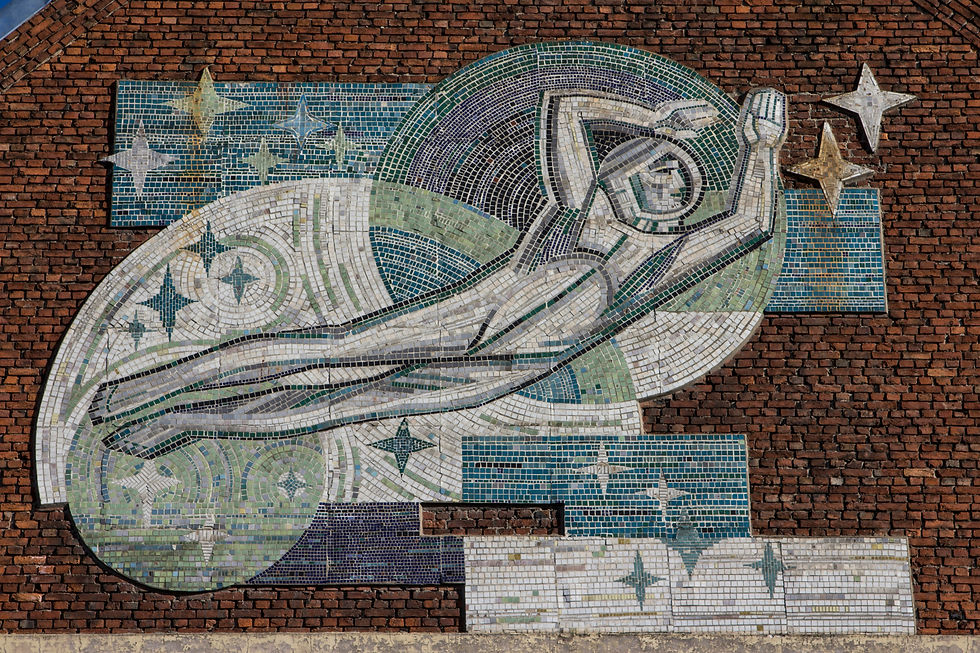Intergenerational Dialogues: Armenia’s Soviet Past and Memory. part 4
- Paradigma Reporter
- Nov 27, 2023
- 3 min read

To gain some multiperspectivity, some teachers encourage students to learn from the stories of their family members. Anush, for instance, asked students to interview their grandparents. “They went to their grandparents and asked what they thought of the Soviet Union, and then the kids started presenting it to understand what the period was like,” she says. While Anush’s attempt to incorporate people’s oral stories to teach about Soviet Armenia has the potential to foster multiperspectivity among students, it may, however, be in vain since she has her rigid ideas about Soviet Armenia and, in a way, undermines the validity of her students’ findings or what those very grandparents have experienced, for example. “The elders often say that things were free back then; everything was fine,” says Anush, pointing out that those very people had relatives who had been killed in the war, but since it was “in the name of the homeland,” it was somewhat justified. “In other words, propaganda had a lot of influence; people had no freedom. [...] No matter how good it was back then, according to my grandparents, I can’t embrace that history. I am from the Independence generation and don’t like being called Soviet,” Anush concludes. Her observation highlights the effect of state-sanctioned propaganda of the time.
Educators of the older generation seem to have shaped their ideas about Soviet Armenia based on professional training and personal experience alike. In contrast, the Independence generation relies mostly on formal education and familial stories. Unfortunately, the dialogue format doesn’t allow us to explore if and to what extent teachers bring their own experiences into teaching. However, seeing if they bring positionality into the classroom and how it affects student perception of a given topic would be helpful.
“It is important to teach [students] to analyze, to give them multiple sources so the child will think, analyze, and understand. Because teachers often impose their opinion, the child needs a lot of time to form his own opinion,” notes Arman. Not only do students need time to think critically about what they’ve been taught and question it, but many of them don’t always have an environment where they’re encouraged to form their own opinions. Arek’s experience is a vivid example of the issue. When he started university, it was very strange for him to ask for his opinion about something, which helped him learn better. Without a support system, students often don’t know where to start from.
Teachers seem to agree that more should be done to foster critical thinking among students but also admit that they lack the necessary support and resources. According to Anush, for example, when she started teaching, from a pedagogical point of view, there were many things she didn’t know how to approach. “A child living in the 21st century must have the skills and must be able to analyze well, but we must also help the teacher to be ready to do it,” says Anush. Her perspective indicates a gap between the aspiration for pedagogical excellence and the current resources to achieve it.
Besides pinpointing the existing flaws in history education, teachers and students offer possible solutions, too. Both students and teachers call for a curriculum that would go beyond textbooks and exams, fostering a deeper understanding of the past. According to many, having open discussions could deepen people’s understanding of Soviet Armenia. Drawing on her own experience, Gohar believes it would also be helpful to amplify the voices of those who had been oppressed during the Soviet times. She recalls how reading Maro Alazan’s memoirs helped her learn more about how women were treated in exile.
The varied viewpoints on Armenia's Soviet past underscore the need for more open debate and conversation around what Armenia’s Soviet past entails, what different narratives there are about it, and what different personal experiences people have had with it and after it. Having a more open conversation on that will also lead to a more comprehensive and analytical approach to understanding Soviet history and history education, one that encourages critical thinking and embraces multiperspectivity.
See also:
This article is based on dialogue between history teachers and students within the scope of the “Intergenerational Dialogue” project led by Paradigma Educational Foundation in partnership with the Friedrich Naumann Foundation. The real names of dialogue participants have been changed to protect their privacy.



Comments